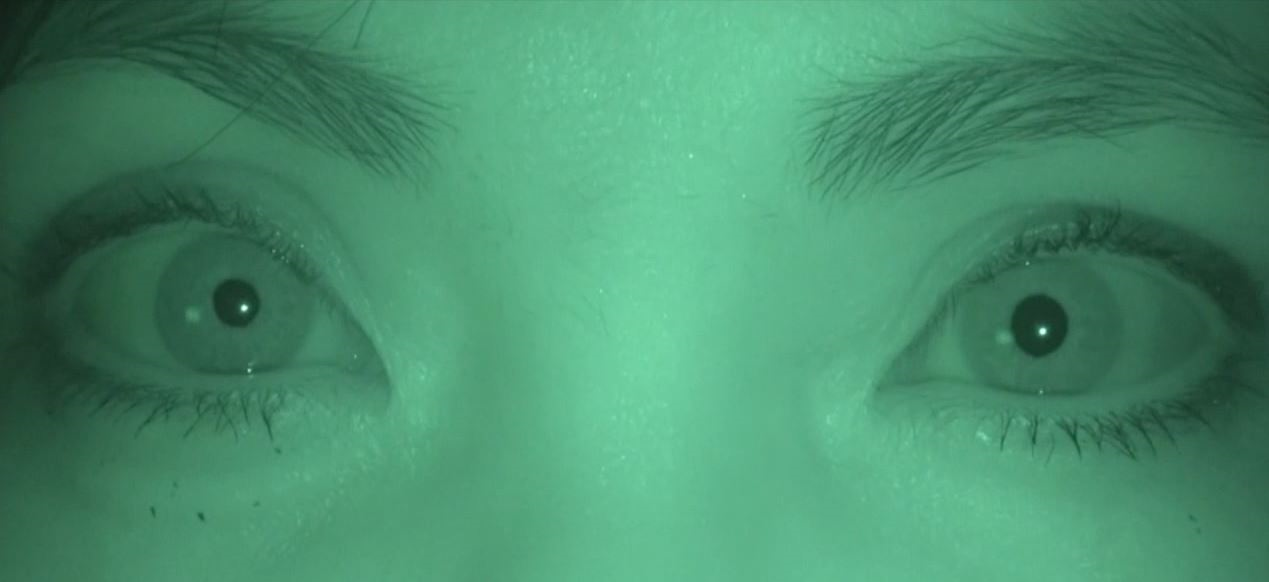( of )
Correct: 0
Incorrect: 0
A 54 year old woman is brought to you for anisocoria. As you can see, the left pupil is larger than the right pupil. The right pupil does not constrict to light; the left pupil constricts normally.

Which maneuver should you next perform to help with the diagnosis?
Correct!
Whenever a pupil does not constrict properly to direct light, you should assess whether it constricts to a target placed within reading distance. Why? Because if the pupil constricts poorly
to direct light, but much better to a target placed within reading distance, you will diagnose “light-near dissociation,” a phenomenon of great clinical value. In the presence of
anisocoria, it signifies a lesion in either the midbrain/pretectum or the ciliary ganglion/ciliary nerves. A dorsal midbrain/pretectum region lesion causes anisocoria and light-near
dissociation by asymmetric interruption of afferent input to the Edinger-Westphal (parasympathetic) nuclei. A lesion here would not produce an irregular (oval)
pupil or slow (tonic) constriction to a near target, features present here that are typical of damage to the ciliary ganglion or ciliary nerves. And other signs
of dorsal midbrain syndrome—especially upgaze deficiency—will always be present! You should not be ashamed if you chose, as an answer here, to perform biomicroscopic
examination in search of iris defects, including congenital dysplasia or synechiae of old inflammation or trauma. However, light-near dissociation and tonicity will not be present in iris sphincter dysfunction. If you presumptively diagnose a tonic
pupil, you could instill a few drops of dilute (0.1%) pilocarpine in both eyes to search for postganglionic parasympathetic iris sphincter denervation supersensitivity. But as pilocarpine
0.1% is not commercially available, you would have to dilute 1% pilocarpine, a maneuver full of errors and a risk of contamination. And some patients with preganglionic third nerve lesions
will display denervation supersensitivity, misleading you from the correct localization. In summary, then, your clinical diagnosis of Adie tonic pupil should be based on finding pupil
ovality, tonicity, and light-near dissociation. To be even more certain of the diagnosis, make sure that there are no signs of a preganglionic third nerve palsy. A small pupil with
light-near dissociation would prompt consideration of syphilis-- the Argyll Robertson (AR) pupil. Some people (including this observer) believe that the AR pupil is actually a chronic Adie
pupil caused by syphilitic involvement of the ciliary ganglion. But you should initiate an evaluation for syphilis ONLY if there are other neurologic signs typical of this disease!
Apraclonidine and cocaine are topical agents used when the patient has anisocoria and both pupils constrict normally to light.